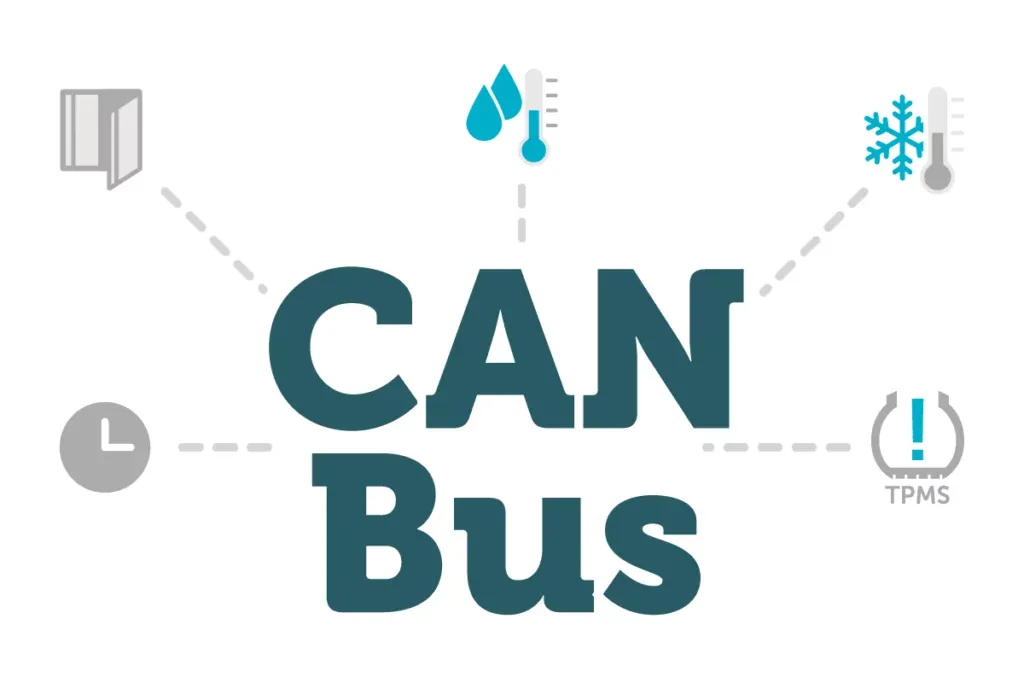Modern Internet of things technologies shape hardware design and deployment in modern vehicles. An important aspect of system communication for vehicle manufacturers is the ability of the systems and devices to communicate locally, similar to how information is delivered to the cloud. The CAN bus is the nervous system that facilitates communication between electronic control units in the vehicle. Modern vehicles use the CAN bus to transfer information between electronic control units and automotive electronic systems. Since the CAN bus is a high-speed communication network, it provides a wide range of real-time and onboard diagnostics data. Fleet managers can use the data to improve driver safety, reduce vehicle running costs and streamline maintenance processes.

What Is a CAN Bus?
A Controller Area Network (CAN) is a robust vehicle bus standard that allows devices to communicate without a computer. A CAN bus is considered the nervous system since it connects and relays messages between various electrical systems. Modern vehicles operate with electronic control units (ECU) — like the Engine Control Module (ECM) and ECUs — for safety, transmission and entertainment. For instance, ECUs control anti-lock braking systems, power steering, audio and video systems, mirror adjustments and cruise control. While each ECU operates independently, the safe running of a car depends on the ECUs communicating with each other. When they fail to communicate, the driver doesn’t get the necessary signals about the problems in the vehicle. A CAN bus provides a system of communication that allows the ECU to send signals and receive feedback. With a CAN bus, the ECU can communicate alerts to the driver and signal for repairs and diagnostic information.
Bosch invented the CAN bus, and the technology was first used by Mercedes-Benz in 1991. The CAN bus was linked to 5 engine control units in the first vehicle to boost performance and safety. It enabled a faster flow of real-time data around the car, improving efficiency. Since a CAN bus network is designed to combine messages relayed between 2 devices, the amount of electrical wiring required is reduced. It was a step up from the initial 2-way receiver used in older vehicle models, as they could cope with multiplex communication.
How Does a CAN Bus Work?
A CAN bus sends messages to various modules in a vehicle. It also reads and relays data from ECUs to facilitate many operations. CAN is a linear bus system that relays digital signals from the microcontroller (CAN node) or 1 device to another. A CAN bus is a twisted pair of copper wires for high- and low-priority information connected by terminating resistors.
CAN bus systems work by creating unique data frames for each device in the network. The data frame becomes the standard message format used to transmit data sequentially. When 2 electronic units transmit data simultaneously, the highest-priority device relays data first while the other waits. The data frame has an identifier that shows the message priority. Arbitration across the bus network facilitates the transmission of higher-priority data.
In order to improve the data transfer process, each CAN node has a CPU (or CAN transceiver) and CAN controller that adapts the signal levels for data sent and received by the node. With CAN protocol data transmission, the voltage levels change and are translated to the logic level, enabling ECUs to communicate with each other. For instance, if the CAN node is transmitting logic 1 on the bus, the voltage is set at 2.5 volts, a recessive state that shows the CAN bus is available for ECU. When logic 0 is transmitted, the CAN high line is at 3.5 volts, while the low priority is at 1.5 volts. The bus with a higher voltage is at the dominant state and needs to transmit data before other ECUs relay information. The voltage changes are facilitated by the CAN transceiver, which changes the voltage to a level that the ECU can understand.
When the CAN bus connector is standardised, it is easy to introduce tracking devices that access CAN data transmissions and vehicle tracking software.
Understanding the CAN Protocol
Whenever 2 ECUs communicate, they use a special message structure. The twisted pair design of the CAN bus wire prevents data corruption during transmissions. Some popular CAN message structures include:
- SOF: The start of frame (SOF) is a dominant bit data frame transmitted by a node to signal that it wants to send data on the CAN bus.
- Identifier: The identifier in the CAN protocol can be 11 or 29 bits, depending on the version of the CAN protocol. If the extended version of CAN is used, the identifier is 29 bits. The role of the identifier is to determine the message priority.
- RTR: The remote transmission request is used by a CAN node to request data from another node. That means the node requesting the data is the recessive bit, while the intended node becomes the dominant node.
- DLC: The data length code determines the data size transmitted in the data field.
- Data field: The data field contains a data payload of 8 bytes, but CAN FD and newer data protocols have payloads of 64 bytes.
- CRC: The cyclic redundancy check is an error-checking frame. The frame is in 15 bits, and the transmitting node creates a CRC for data transmission. Meanwhile, the receiver computes the CRC for data received.
- End of frame: When data is transmitted, 7 consecutive recessive bits are transmitted to ensure all nodes have completed data transmission.
CAN Bus and GPS Fleet Tracking
The CAN bus protocol is used by car subsystems to relay information between electronic control units. The CAN data provides useful information about the vehicle. For instance, OBD-II ports are installed in light-duty and heavy-duty vehicles. They can tap into CAN data and provide information on the vehicle. Fleet operators can track fuel consumption, engine load, temperature and speed. The information is useful for identifying areas of improvement in vehicle operations and reducing overhead. With the collected data, fleet managers can minimise environmental impact.
What Are the Benefits of CAN Bus?
Using a CAN bus instead of previous message transmission systems has numerous benefits. For instance, the CAN protocol has arbitration rules with identifiers to prioritise messages sent to and from connected devices. The CAN bus relies on a 2-wire structure that is easy to install and maintains flexibility. That’s why CAN-connected systems have fewer wires, so adding more components to the system is easier with minimal effort.
New fleet tracking devices and components can be added to improve vehicle diagnosis. CAN has twisted pair wiring that is not sensitive to electromagnetic interference. Aside from the fewer cables required, data rates across the CAN bus network are faster than the traditional cabling due to multiple messages sent to connected devices. Data is automatically prioritised across CAN using the identifier to improve efficiency in data transfers. Unlike traditional cabling that does not permit the transmission of multiple messages, a CAN bus has a high-speed data transfer rate since multiple messages can be sent simultaneously. That means errors in vehicles are detected easily by fleet tracking solutions.
Sources:
- https://en.wikipedia.org/wiki/CAN_bus
- https://www.makeuseof.com/what-is-can-bus-in-automotive-systems/
Disclaimer
This content is provided for informational purposes only and is not meant to be an endorsement or representation by FleetGO.com or any other party. This information may contain inaccuracies or typographical errors, despite our efforts to ensure accuracy. FleetGO.com accepts no responsibility or liability for any errors or omissions, and is not responsible for the contents of any linked website or any link contained in a linked website. Please refer to our full disclaimer for more details.


